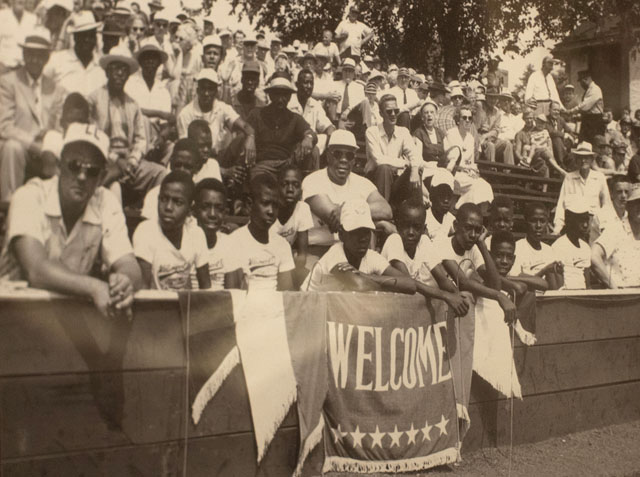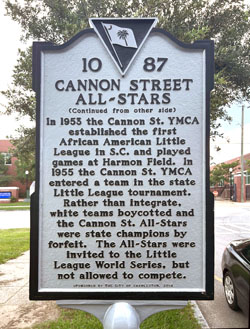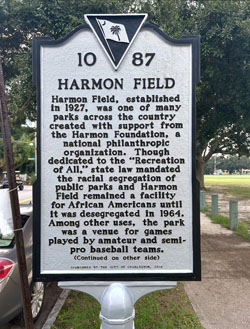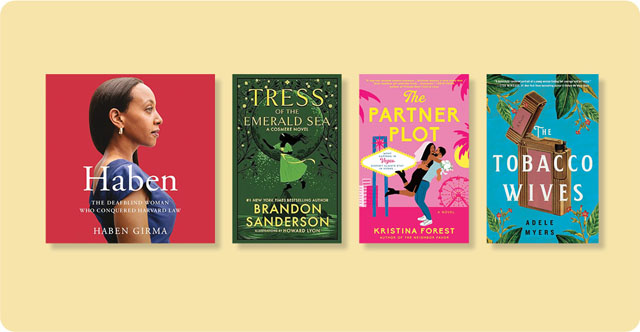On-and-Off-the Field
04 Sep 2024
Sporting events have long reflected the economic, social and political realities of the era
By Tim Lowry

You can hardly name a sport that isn’t played at some time or some place across the State of South Carolina. In fact, some sources even note the real-life Quidditch World Cup from the fictional Harry Potter series being hosted in North Myrtle Beach. This fantastical field sport played by people pretending to fly on broomsticks may be the result of folks having too much time on their hands. However, the history of sporting events in the South Carolina Lowcountry largely parallels the history of the leisureclass, and in a heartbreaking case, racial segregation.
Early settlers spent all their daylight hours clearing land, building homes, planting crops, and hunting wild game. Consequently, if precious time was devoted to friendly competition between neighbors, the activities usually promoted frontier skills necessary for survival: shooting tournaments, axe throwing competitions, foot races, wrestling matches and the like. The harsh environment also gave opportunity for more brutal contests such as bear baiting, cock fighting and goose stretching. Eventually, these “blood sports” were thought of as barbaric and uncivilized and largely abandoned for more genteel and fashionable entertainments, particularly among the elite planter’s class.
The great wealth accumulated by the land barons of the Lowcountry allowed gentlemen to engage in the rich man’s sport of breeding racehorses and sponsoring competitions that brought enthusiastic participants from across the American South.
The first record of a horse race in Charleston dates to 1734. The contest was held on a temporary course with the prize of a new saddle and bridle offered to the winner. Also in that year, prominent businessmen formed the South Carolina Jockey Club, the first organization of its kind in America. Eventually, the New Market Race Course, named after the famous track in England, was constructed just outside the city proper near modern day Line Street. Prizes of gold and silver were offered in annual contests that continued to be popular until the Revolutionary War.
The war years caused a lull in racing activity, but after the British occupation, Charleston entered its “golden age,” and the tradition of horse racing was quickly revived.
In 1791, a one-mile track known as the Washington Race Course was laid out on property near the Ashley River. This track is now incorporated in the driveway that encircles Hampton Park. Racing Week was typically held in February and served as the pinnacle of Charleston’s social season. Schools dismissed classes, court was adjourned, church services were suspended and commerce nearly came to a halt as the entire town was engaged with parties, balls, receptions, award ceremonies and thoroughbred auctions. Racing Week came to be known as “the carnival of the state.”
However, the loss of many fine horses during the Civil War, coupled with the economic depression following the collapse of the plantation system, had a devastating effect on the tradition of horse racing in the South Carolina Lowcountry. In fact, the race course was used as a prison camp during the war years and the inner field turned into a burial ground for over 250 Union soldiers that died there. After the graves were relocated, a feeble attempt was made to revive Charleston’s famous Race Week, but the South Carolina Jockey Club eventually disbanded.


Baseball Boom and the Cannon Street YMCA
Following the Civil War, industrialization and mechanization freed many workers from hours of toil in fields and factories. For the first time in American history, leisurely pursuits were not the exclusive privilege of the socially elite and uber wealthy. Here in the South Carolina Lowcountry, horse racing was on its way out and baseball was coming in.
Southerners were introduced to the sport that was destined to become America’s pastime by Yankee soldiers. In fact, Charleston fielded a team that played against Union occupational forces during Reconstruction.
Baseball quickly grew in popularity, so much so that in 1878 a match between the “Carolinas” and the “Palmettoes” was interrupted by a large crowd of spectators spilling onto the playing field. Before the turn of the century, professional teams were formed and quickly followed with leagues sponsored at every level including cities, mill villages, college athletic clubs and the Little League for boys and youth. The game of baseball seemed to be a metaphor for the American ideal.
Single players contributing their individual efforts to support the cause of the team was a sportsman’s expression of E Pluribus Unum—out of many, one. However, talented African-American players were segregated into their own Negro Leagues. Consequently, the metaphor was flawed. America had a pastime for most, but not for all. Larry Doby, a native of Camden, South Carolina would follow Jackie Robinson as the second black American to enter major league baseball, but it was a group of Charleston kids that would play an important role in breaking the color barrier for boys and youth in the national Little League organization.
The Cannon Street YMCA from Charleston fielded an all-star team to compete in the 1955 Little League season, but white teams refused to play against them. Even though league officials directed rival teams to play, one white team after another chose to forfeit rather than play against the Black youth. The Cannon Street team attended the 1955 Little League World Series in Williamsport, Pennsylvania as spectators only, because officials determined that they could not advance in the rankings by default. The crowd of spectators supported the boys by chanting “Let them play!” The situation brought national attention to the injustice of “separate but equal” sports and served as a major factor in the eventual desegregation of baseball at all levels. In 2002, the team returned to Williamsport, Pennsylvania where Little League officials declared them as the “1955 South Carolina State Champions.”
The history of horse racing and baseball (and maybe Quidditch, too) are examples of the many ways that sports reflect the economic, societal and political realities of a particular time and place.
With that in mind, the next time you toss a ball, swing a bat, or mount a broomstick remember that it’s not just a game—sports reflect life. ϒ
Storyteller Tim Lowry is a Southern raconteur from Summerville. Learn more at www.storytellertimlowry.com.











